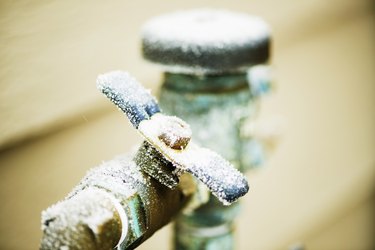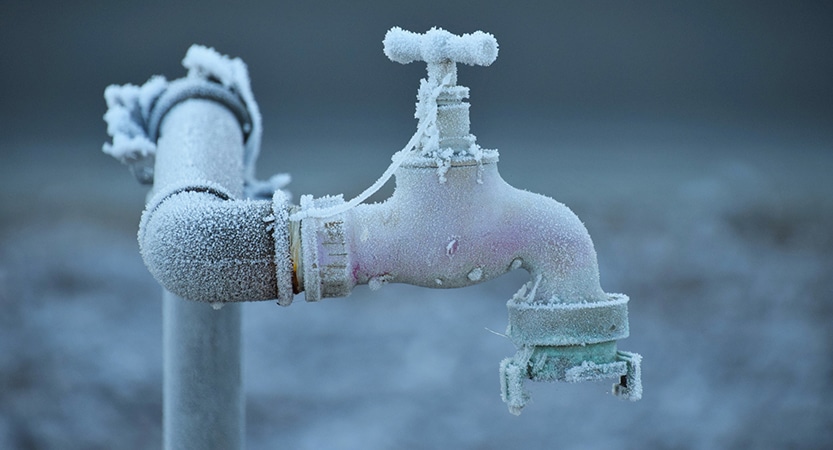How to Safeguard Your Plumbing from Cold Weather: Critical Strategies
How to Safeguard Your Plumbing from Cold Weather: Critical Strategies
Blog Article
We've discovered this post relating to Preventing and dealing with frozen pipes listed below on the internet and accepted it made sense to relate it with you here.

Cold weather can ruin your plumbing, particularly by freezing pipes. Below's how to avoid it from occurring and what to do if it does.
Introduction
As temperatures drop, the risk of frozen pipelines boosts, potentially bring about pricey repairs and water damage. Comprehending just how to avoid icy pipes is important for home owners in chilly environments.
Understanding Icy Pipes
What creates pipelines to freeze?
Pipelines ice up when subjected to temperatures listed below 32 ° F (0 ° C) for extended durations. As water inside the pipes freezes, it expands, taxing the pipe walls and potentially creating them to break.
Risks and damages
Icy pipelines can bring about water supply disturbances, home damage, and costly fixings. Burst pipelines can flooding homes and create extensive architectural damage.
Indicators of Frozen Pipeline
Recognizing frozen pipelines early can avoid them from breaking.
Exactly how to identify frozen pipelines
Try to find decreased water circulation from faucets, uncommon smells or sounds from pipes, and visible frost on subjected pipes.
Avoidance Tips
Insulating at risk pipelines
Cover pipelines in insulation sleeves or make use of heat tape to safeguard them from freezing temperatures. Concentrate on pipelines in unheated or exterior locations of the home.
Home heating techniques
Keep interior rooms appropriately warmed, especially areas with plumbing. Open closet doors to enable cozy air to distribute around pipes under sinks.
Protecting Outdoor Pipes
Garden hose pipes and exterior faucets
Separate and drain pipes garden pipes before winter season. Install frost-proof faucets or cover outdoor faucets with protected caps.
What to Do If Your Pipes Freeze
Immediate activities to take
If you presume frozen pipes, maintain faucets open to relieve stress as the ice melts. Use a hairdryer or towels taken in hot water to thaw pipes gradually.
Long-Term Solutions
Structural adjustments
Think about rerouting pipelines away from outside wall surfaces or unheated areas. Include added insulation to attics, cellars, and crawl spaces.
Updating insulation
Purchase premium insulation for pipelines, attics, and walls. Appropriate insulation aids preserve constant temperature levels and reduces the risk of icy pipes.
Verdict
Stopping frozen pipes calls for positive actions and quick feedbacks. By recognizing the reasons, indicators, and safety nets, house owners can protect their pipes during winter.
5 Ways to Prevent Frozen Pipes
Drain Outdoor Faucets and Disconnect Hoses
First, close the shut-off valve that controls the flow of water in the pipe to your outdoor faucet. Then, head outside to disconnect and drain your hose and open the outdoor faucet to allow the water to completely drain out of the line. Turn off the faucet when done. Finally, head back to the shut-off valve and drain the remaining water inside the pipe into a bucket or container. Additionally, if you have a home irrigation system, you should consider hiring an expert to clear the system of water each year.
Insulate Pipes
One of the best and most cost-effective methods for preventing frozen water pipes is to wrap your pipes with insulation. This is especially important for areas in your home that aren’t exposed to heat, such as an attic. We suggest using foam sleeves, which can typically be found at your local hardware store.
Keep Heat Running at 65
Your pipes are located inside your walls, and the temperature there is much colder than the rest of the house. To prevent your pipes from freezing, The Insurance Information Institute suggests that you keep your home heated to at least 65 degrees, even when traveling. You may want to invest in smart devices that can keep an eye on the temperature in your home while you’re away.
Leave Water Dripping
Moving water — even a small trickle — can prevent ice from forming inside your pipes. When freezing temps are imminent, start a drip of water from all faucets that serve exposed pipes. Leaving a few faucets running will also help relieve pressure inside the pipes and help prevent a rupture if the water inside freezes.
Open Cupboard Doors
Warm your kitchen and bathroom pipes by opening cupboards and vanities. You should also leave your interior doors ajar to help warm air circulate evenly throughout your home.

I am very fascinated with How to prepare your home plumbing for winter weather and I really hope you enjoyed reading my blog entry. For those who liked our post kindly do not forget to share it. Thank you so much for your time invested reading it.
Instant Quote Report this page